Change Management Helps Optimize Business Operations
There is an old saying, “The only thing constant is change.” This is particularly true in the world of information technology. Email has transitioned to instant messages. Smartphones are as powerful as mainframes were 30 years ago. Sneaker-net disappeared only to be replaced by “collaborative” technologies that allow BYOD (Bring Your Own Device) activities that exponentially spread company data throughout your workforce. Manufacturing systems where programming and setup were done on the individual machine tools are now handled by remote programming and program delivery to the equipment.
Changes in manufacturing processes are planned, tested, modified, retested and implemented. In regulated industries, the documentation of this process is generally done through a validation process. In information technology, this is done through the change control process and is essential to ensure smooth implementation of new systems, system upgrades, disaster recovery and regular maintenance of existing systems and equipment.
Strong IT organizations have Project Management Offices to create project plans including project charters, definitions, processes and metrics per project. Once these are laid out, and the project is initiated change control must be initiated and documented. When you have a large staff, with dedicated project managers, project participants, and technologists, this is not a complicated process. When you have a CFO, an IT manager and a desktop support person, it is tough.
Three principles of Change Management that will help are:
- Document the “as is” state of your current system configuration before implementing any changes. This allows a clear set of parameters if you ever roll back your changes.
- Document the “future” state of your proposed system. This will ensure you know what you are trying to achieve and help keep you on pace.
- Document what changes need to be made to move from your “as is” to your “future” state.
Once these are done, clone or backup your existing systems on separate equipment. Virtualization of computer systems makes this process easy and cost efficient. Make your changes in the Virtual environment to ensure they work properly and document the changes. Clone your live environment again just to be on the safe side. You are now ready to implement your changes in your live environment knowing that they will work and you will have a disaster recovery platform should it be required.
Again, if you have a small staff or a staff unfamiliar with documenting and managing change, this can be a daunting task. There is help for your team to guide you through planning, documenting, and implementing changes to your IT systems both hardware (infrastructure) and software (programs and applications). Contact Kotori Technologies to learn more about managing system changes.
